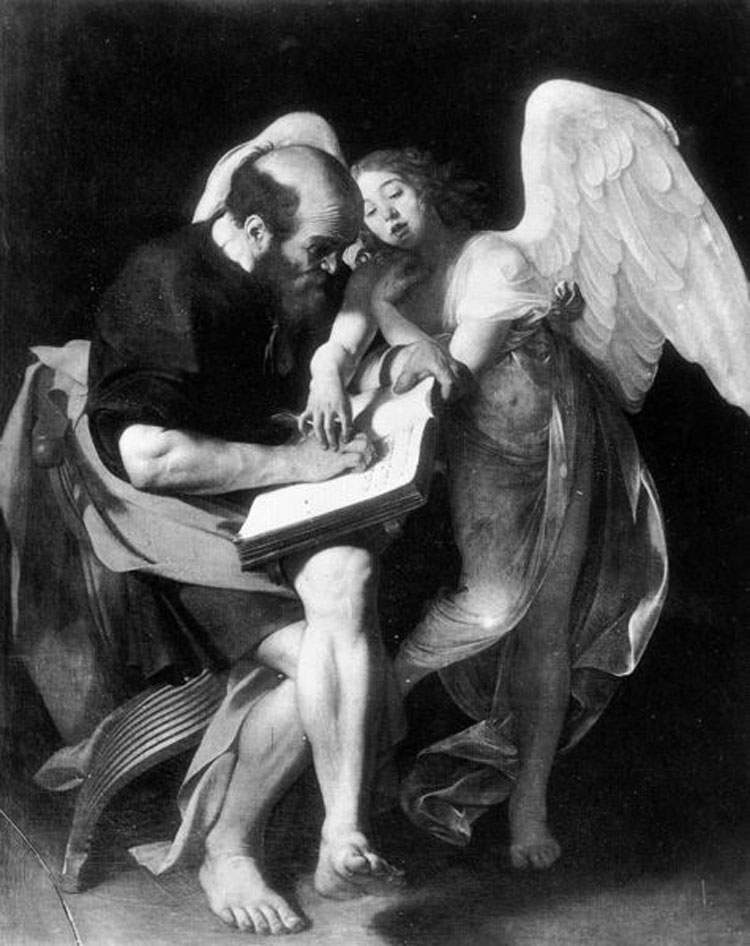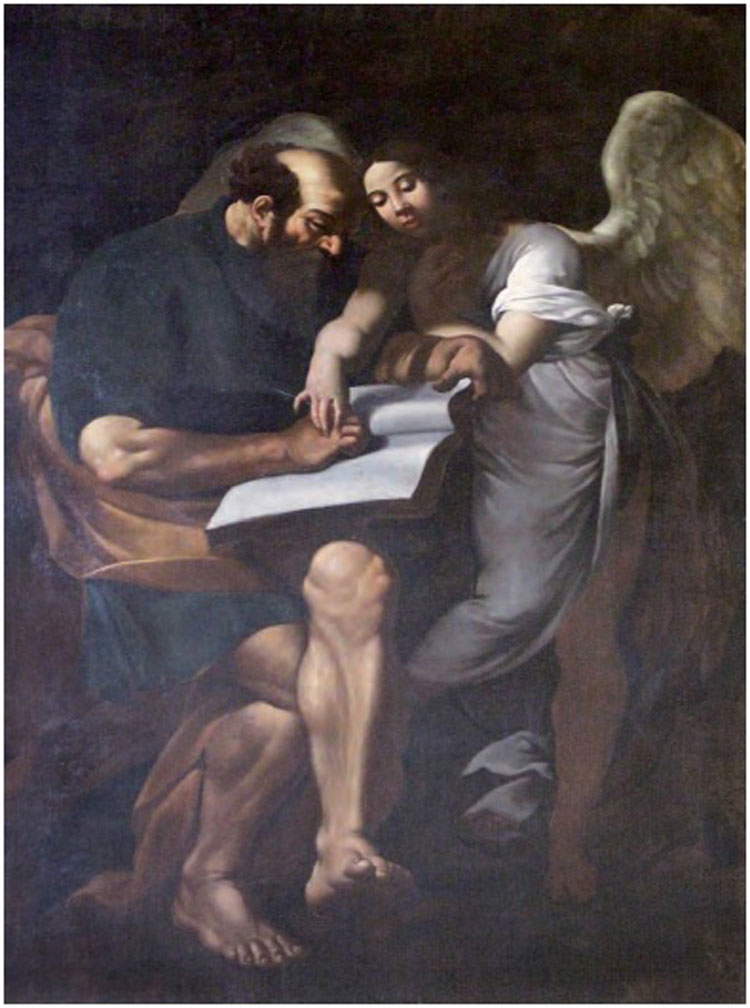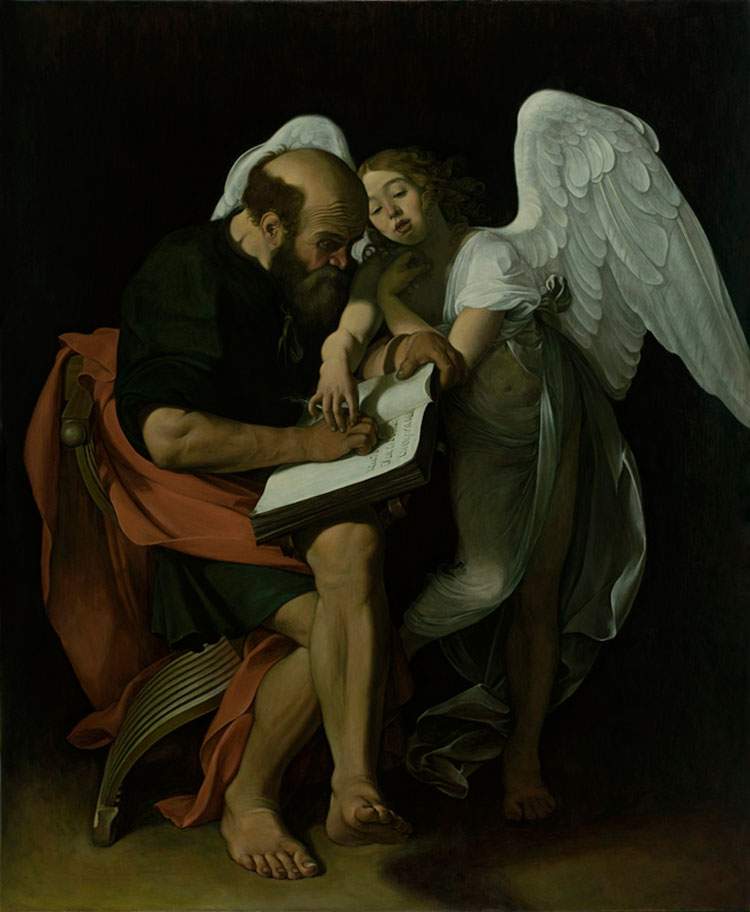Caravaggio's lost St. Matthew? Perhaps it was not painted for the Contarelli Chapel
On May 3, a seminar on Caravaggio’s “St. Matthew and the Angel” will be held in Rome’s Villa Lante al Gianicolo, during which new information about the work will be discussed. We give you some previews about one new thing that will be discussed.
It was in May 1945 when, in a now-liberated Berlin, to the best of our knowledge, Soviet troops set fire to the Flakturm Friedrichshain, although to this day the Allied bombing is still told to blame. This was, paradoxically, the repository where, during World War II, dozens and dozens of works of art from the Kaiser Friederich Museum had been planned to be secured.
To read even today the list of destroyed paintings (but we would like to think more optimistically that they were stolen, and that one day some may come to light again) is chilling, to say the least. Rubens, Goya, van Dyck, Andrea del Sarto-these are just a few authors of the more than four hundred missing paintings. Prominent among them were as many as three Caravaggios from the Giustiniani collection, whose heirs disposed of them in 1815 in order to recover liquidity, selling them to the King of Prussia: the little-studied Christ in the Garden of Olives, the Portrait of the Courtesan Fillide (a model whose model was forcibly thought to be Merisi’s own lover and who had also posed in other paintings) and, certainly the most appreciated and well-known of them all, St. Matthew and the Angel. The latter, as recounted by biographer Giovan Pietro Bellori, was placed on the altar of the Contarelli chapel in San Luigi dei francesi, and was rejected for lack of decorum and in particular for those feet crudely exposed to the people, with the saint looking like a poor illiterate, literally guided in the writing of the Gospel by the hand of the Gospel. So much so that it was replaced by the more composed painting that we all admire in the church today.
 |
| Caravaggio, St. Matthew and the Angel (before 1602; oil on canvas, 223 x 183 cm; formerly in Berlin, Kaiser Friedrich Museum; destroyed during the fire of the Friedrichshain Flakturm) |
But did it really turn out that way? The legend of the cursed painter is extremely fascinating and hard to shake. Yet it seems more plausible that, given also the near-square format unsuitable for an altarpiece (and the significantly smaller height than the second version), along with the absence of related documents (otherwise always found for Caravaggio’s other works in the Contarelli chapel) the St. Matthew never set foot on the altar. Rather, the work must have been commissioned directly as a room painting by Marquis Vincenzo Giustiniani. The latter, a few years later, placed alongside it in his rich gallery depictions of the other three evangelists, at the hands of other famous artists: Guido Reni(St. Luke), Domenichino(St. John) and Francesco Albani(St. Mark). Of the entire cycle only St. John has survived, which went to, and can still be seen in, the National Gallery in London. Of the other two all trace had been lost until recently the rector of St. Louis of the French, Monsignor François Bousquet, reported the presence of a cycle of four evangelists hanging in the counter-façade of the church of Saint-Martin near the French village of Pauillac, a name that until now would have told most people nothing. Two of these paintings are copies of the already known Matthew and Luke by Merisi and Reni, from which it can be deduced, also from stylistic reading, that the remainder are also copies of the other two paintings missing from theppello, whose iconography was completely unknown.
With this fine discovery must now reckon the chromatic reconstructionsof the Caravaggesque St. Matthew, all of them different and elaborated by various means starting from a simple black-and-white photo, up to the last one by the painter Antero Kahila, which compared to the original however differs in substance only in the color of the cloak (red instead of orange). The copyist, in addition to having delved into Merisi’s technique, had also documented himself on the early twentieth-century literary descriptions of the various scholars who, each resorting in his own way to the nuances of his own language, had described the colors of the dispersed painting: art history, as we know, is not an exact science (and discoveries sometimes lead to revising what was already believed to be more than acquired). In any case, the life-size oil-on-canvas copy of Kahila remains an emotionally powerful piece, beyond the poignant story of the prototype, and is currently on display until early May in Rome at Villa Lante al Gianicolo, a Renaissance villa now home to the Academy of Finland. All of these issues will be discussed there at a symposium conceived by Michele Cuppone that, on May 3 starting at 6 p.m., will feature scholars of international standing, from Alessandro Zuccari to Altti Kuusamo.
 |
| The painting identified in Pauillac (late 18th century; oil on canvas, 140 x 114 cm) |
 |
| Antero Kahila, reconstruction of Caravaggio’s St. Matthew and the Angel (2008; oil on canvas, 232 x 183 cm) |
Of course, it pains to think of a Caravaggio burning or otherwise no longer there. And, unfortunately, it was neither the first nor the last time it happened. Again, it is only literary sources that recall a splendid Resurrection painted in Naples for such Alfonso Fenaroli in the church of SantAnna dei Lombardi, which went missing following the 1798 collapse that devastated the building. Still, several researches have recently devoted themselves to reconstructing, at least, the Roman genesis in the 1600s of the Nativity with Saints Lawrence and Francis, but there has been no trace of the painting since it was stolen in 1969 from theSan Lorenzo oratoryin Palermo for which it was painted. And it is not only Caravaggio: it is current news that the Guercino altarpiece was stolen in 2014, and several paintings from the Castelvecchio museum as early as the following year. These are the most sensational recent cases of a continuous hemorrhage, but at least all of them fortunately recovered (albeit in a very precarious condition in the case of the Guercino).
Our country boasts an inestimable cultural wealth: however, it must be reiterated that this heritage is not adequately valued in the noblest and least commercial sense of the term, and that not enough is done to put the entities in charge in the best conditions to preserve it, thinking of posterity but also of ourselves. The Nucleo Tutela Patrimonio Culturale, fatally established in the same 1969 as the last missing Caravaggio in order of time, alone and with the available resources is not enough. We would no longer want to open the news or cultural pages and read of a painting, even if it is just one more and of immeasurably less value than those previously considered, taken from the community. Can anything really change?
Warning: the translation into English of the original Italian article was created using automatic tools. We undertake to review all articles, but we do not guarantee the total absence of inaccuracies in the translation due to the program. You can find the original by clicking on the ITA button. If you find any mistake,please contact us.





























